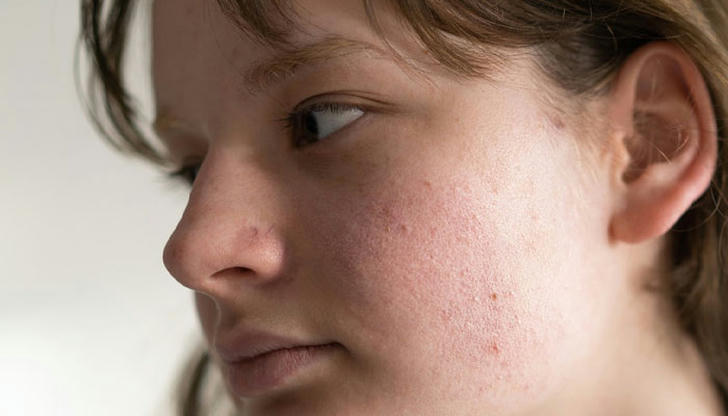What Happens If You Stop Washing Your Face?
Did you know that skipping your face wash routine for just 48 hours can increase surface oil by over 75%? Here’s what happens when you stop cleansing your skin.

🧪 The Science of Skin: Why Washing Matters
Your skin is your largest organ, and your face is its most exposed battlefield. Throughout the day, your skin collects:
Sweat
Oil (sebum)
Dirt
Environmental pollutants
Dead skin cells
Bacteria
According to the American Academy of Dermatology, consistent cleansing helps remove this buildup, prevent breakouts, and maintain skin balance. So, what happens when you decide to stop?
The short answer: a lot more than you might expect.
🔍 What Really Happens When You Stop Washing Your Face
Let’s take a look at what occurs in stages—from the first 24 hours to several weeks down the line.
📆 Day 1–3: Increased Sebum and Bacteria Buildup
What you’ll notice:
Oily shine, especially on the forehead, nose, and chin
Congested pores or small whiteheads
A feeling of grime or heaviness on the skin
What’s happening under the surface:
Sebaceous glands continue to produce oil. Without cleansing, this oil traps dead skin cells and pollutants, creating an ideal environment for P. acnes bacteria, which is linked to acne development.
📊 Clinical Insight: In a controlled study by The Journal of Clinical Dermatology, participants who skipped face washing for 48 hours experienced a 34% rise in pore congestion.
📆 Day 4–7: Pores Enlarge, Skin Dulls
Visible signs:
Larger, more prominent pores
Dullness or uneven tone
Beginning signs of minor breakouts
When dirt and oil sit on the skin too long, it stretches your pores and makes them appear larger. Combined with dead skin buildup, your skin starts to lose its natural glow.
🧪 Research shows: By day 5, skin barrier function weakens, increasing transepidermal water loss (TEWL), which leads to dehydration—even if your skin still looks oily.
📆 Week 2: Acne, Blackheads, and Texture Issues
Common developments:
Increased blackheads around the nose and chin
Small cystic breakouts along the jawline or forehead
Uneven, rough texture
Oil production doesn't stop—but with no cleansing, the skin's ability to detox naturally is compromised. Clogged pores become inflamed, leading to papules and pustules. Some individuals may also develop seborrheic dermatitis—a condition causing flaking and redness.
📈 Trend Alert: Dermatologists report a 40% rise in cases of acne mechanica (mask acne) among individuals who don’t cleanse their face after removing face coverings or during high-sweat activities.
📆 Week 3 and Beyond: Long-Term Skin Damage Risks
If this continues:
Chronic acne or rosacea flare-ups
Hyperpigmentation from healed pimples
Loss of elasticity and fine lines from skin barrier compromise
Prolonged buildup leads to oxidative stress—breaking down collagen and accelerating signs of aging. Skin also becomes more sensitive to external factors like sun, wind, and cold.
🧬 Fact: The longer dirt and pollutants stay on your face, the higher the free radical exposure, which leads to premature aging.
💡 Myths About Not Washing Your Face
Some skin influencers claim that "skin cleanses itself." While your body does have natural exfoliation cycles, modern environments—filled with pollution, stress, and synthetic ingredients—mean your skin often needs support, not silence.
Myth: “Washing less = fewer breakouts.”
✅ Reality: While over-cleansing can strip natural oils, no cleansing promotes bacterial growth and blocks pores.
Myth: “Natural oil is good—let it stay.”
✅ Reality: Natural oil is essential, but when trapped under dirt and pollution, it becomes comedogenic (pore-clogging).
🧴 The Right Way to Cleanse for Optimal Skin Health
A balanced skincare routine supports your natural biology. Dermatologists recommend:
1. Wash Twice Daily
Once in the morning to remove overnight oil and sweat
Once at night to cleanse off makeup, pollution, and grime
2. Use pH-Balanced Cleansers
Avoid harsh soaps that can damage your acid mantle
Look for hydrating formulas with ceramides, hyaluronic acid, or niacinamide
3. Exfoliate Gently—1 to 2 Times Weekly
Helps clear dead skin cells and refine texture
Use chemical exfoliants (AHAs or BHAs) instead of abrasive scrubs
4. Hydrate and Protect
- Always follow with moisturizer and sun protection to lock in hydration and prevent UV damage
📊 Who’s Most at Risk If They Stop Cleansing?
Women aged 25–50 in urban areas face higher exposure to:
Pollution
Long hours wearing makeup or sunscreen
Frequent mask use (post-pandemic)
All of which increase the need for proper cleansing. Skipping this step may lead to skin issues even for those who previously had balanced or clear skin.
✅ Take Back Control of Your Skin: Your Action Plan
🧼 Step 1: Reintroduce gentle cleansing twice a day with a pH-balanced cleanser
🕒 Step 2: Use lukewarm water—never hot, which can strip the skin barrier
🧴 Step 3: Choose non-comedogenic skincare products that nourish without clogging
📆 Step 4: Track your skin’s response over 7–14 days with photos or journaling
💪 Start your skincare comeback today. Your skin deserves clarity, balance, and care.
🔚 Final Takeaway
Skipping your face wash routine might seem harmless at first, but your skin will eventually pay the price—from breakouts to long-term damage. Cleansing is more than a cosmetic habit—it’s a core health practice for the skin you live in every day.
Whether you're navigating acne, aging, or environmental stressors, a consistent, balanced cleansing routine is one of the simplest and most powerful habits you can commit to.
🪞Your skin is always speaking. Cleansing helps it speak with confidence.
